Bryce Canyon National Park holds a grand collection of one of the stranger geologic formations found in our parks: The Hoodoo…
Guide to Bryce Canyon
Bryce Canyon National Park
Bryce Canyon National Park is all about the hoodoos, those reddish-pink totem-pole-like spires that rise vertically from the park’s arid basins. Bryce’s hoodoos range in height from just a few feet, to that of a 10-story building. Their beautiful red-pinkish hue is granted by iron deposits and various minerals that were deposited into the soil from that ancient sea.
Bryce Canyon contains more than 2,000 of these peculiar hoodoo structures in seemingly endless clusters. In fact, nowhere else on Earth does the number of hoodoos equal the number found here. These skyward bound columns are granted spectacular accent by the glowing reddish pink color of the dirt towers that stand against blue desert skies in a park that is truly like no other…
Where is Bryce Canyon
Bryce Canyon National Park is one of the “mighty five” national parks tucked into the bizarre landscapes of southern Utah and its position among these gems is unparalleled. Its structures are unlike those found in the other parks. Deep canyons and red sandstone are not found here. Bryce is far above that. Literally…
The pink cliffs of Bryce are some 4,000 feet above the sandstone labyrinths found in Zion, Capitol Reef, Canyonlands and Arches. Very little sandstone is witnessed at Bryce. Instead, visitors to this land gaze out upon the limestone remnants of ancient sea bed now perched on pedestals that tower into blue desert skies.
These geologic wonders are found in various places around the globe, and numerous hoodoos are scattered throughout the western U.S. Notable collections are found in Badlands National Park and Theodore Roosevelt National Park in the Dakotas.
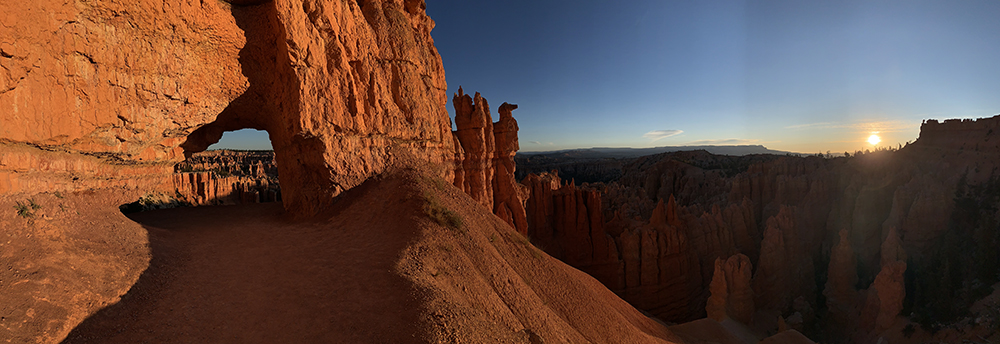
However, the number of hoodoos in these places pales in comparison to the numbers found at Bryce. There are more hoodoos gathered in the northern section of Bryce Canyon National Park alone, than anywhere else on Earth.
Exploring Bryce Canyon
Bryce’s hoodoos are easily viewed by the common sightseer thanks to a number of scenic overlooks accessed by auto on a 36-mile roundtrip drive into the park. More than 15 different overlooks are conveniently located along Hwy 63, which is the only road into the park. Most of these require a minimal walk of no more than 50-100 feet from ye ol’ metal coffin.
Views to the east showcase the results of Earth’s erosive forces which have been at work here for nearly 20 million years. These structures are constantly changing. Not a day goes by that the hoodoos are not ever-so-slightly diminished in size by the constant assault of weather, time and gravity.
As they crumble, the mesa upon which they stand, the Paunsaugunt Plateau, erodes further to the west. This process prompts the formation of new hoodoos and more stunning scenery. But the party won’t go on forever… Scientists estimate that approximately 300 million years from now, the erosion will eat completely through the Paunsaugunt, and the plateau will be gone.
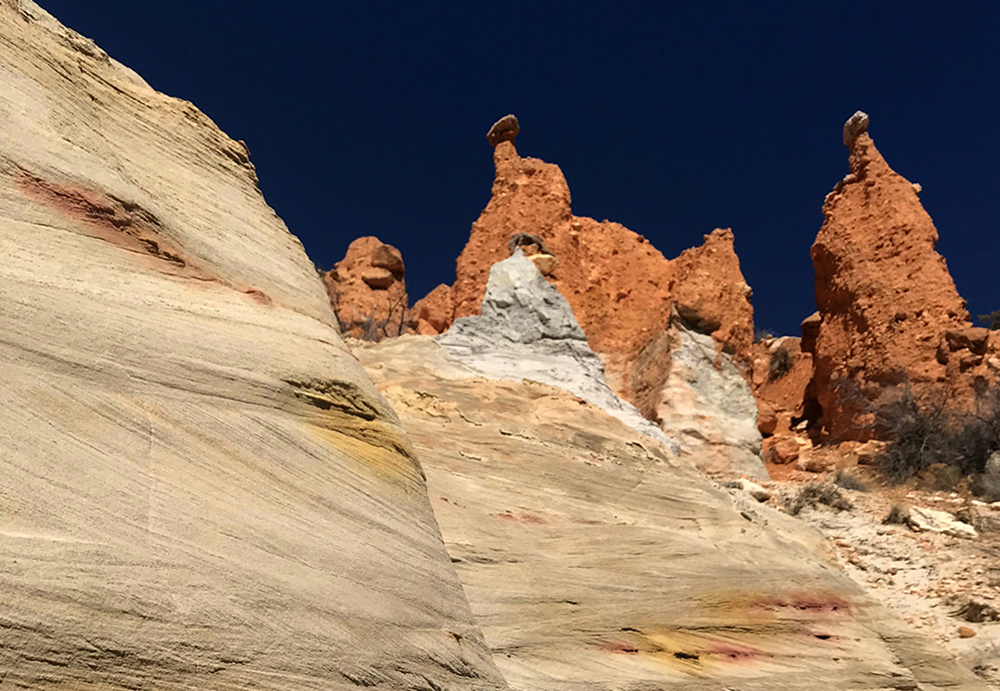
Bryce is a considered a small park here in the west. Its 35,000 acres skirt the eastern edge of the Paunsaugunt Plateau. The park’s boundary reaches down into the forests of the Paria Valley, below the rim. The park extends just far enough to encompass the terminus of the cliffs, often a couple of thousand feet below the rim. It is a jagged land.
Most people who visit Bryce never leave the rim. There are numerous sites along the rim of the park that offer spectacular views and many feel no need to journey further to investigate the park’s backcountry. Tours are offered that lead visitors to the more popular lookouts and knowledgable guides tell the story of Bryce Canyon.
See the shuttle section on the visiting Bryce Canyon page for information about the Rainbow Point tours.
Playtime in Bryce Canyon
The hiking here is fabulous. Bryce’s higher elevation means that temperatures are perfect here in the summer months. In fact, you’ll probably want a jacket for when the sun goes down. The sun is still a scorching desert sun though, so don’t forget the sunscreen and plenty of water.
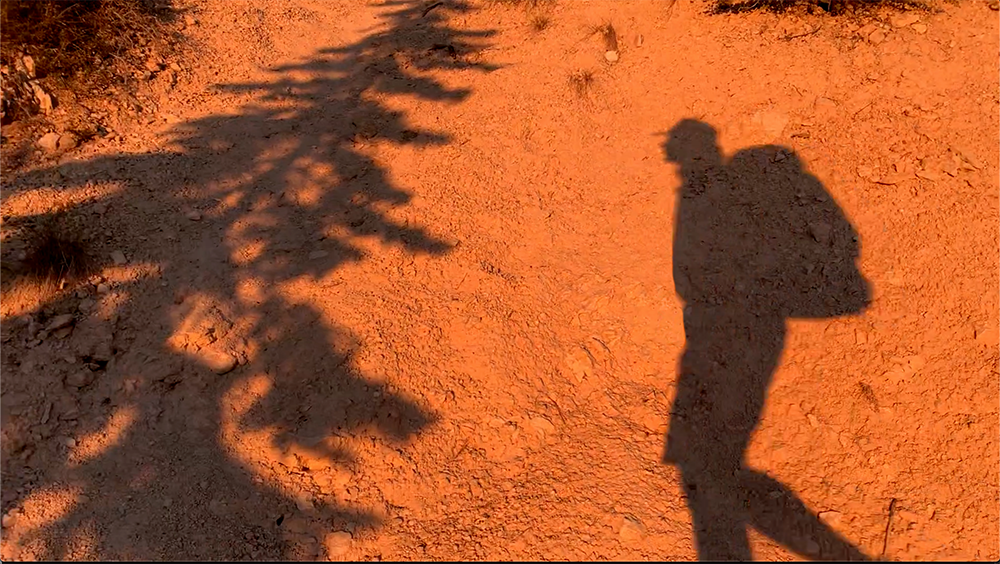
There are roughly 65 miles of hiking trails in the park. The more popular trails are found in the northern section and offer journeys into the heart of the hoodoos. These trails are popular, and are often quite busy. Any trail that takes you down into the hoodoos will require that you hike back out. Elevations are quite high and the air can be thin, so keep your abilities and physical limitations in mind.
More remote trails exist that provide near absolute solitude and offer a rugged backcountry experience. Most visitors to Bryce do not hike far below the rim, so any hike into the unknown realms of the lower elevations will bless the traveler with nothing but the splendid sounds of nature.

See the park junkie post on hiking the Under the Rim Trail for a detailed description and visit the activities page to determine the perfect hike for you.
Seeing Bryce on Horseback
Horseback tours are available in the park. The popular and stunning Peek-A-Boo Loop is a popular route for such creatures and their riders. Riders depart with a guide from the horse corral near the Bryce Canyon Lodge and descend into the hoodoos below. Two and three hour tours are available. See the activities page for info.
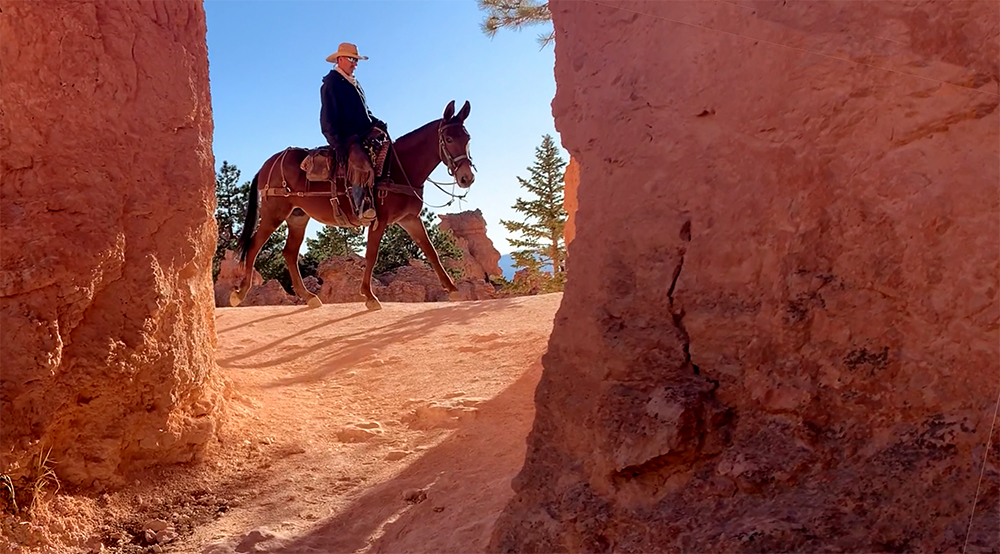
Seasons in Bryce Canyon
Summer is the most popular time to visit Bryce. Temperatures here in the summer months can be so much more appealing than those of nearby parks in southern Utah. An elevation of 8,000 feet can provide an escape from the searing heat, but the sun is still intense here, and one should not underestimate its effects even though it may initially feel much cooler here.
Spring and fall are wonderful times to journey through the cliffs of Bryce, and can sometimes yield less crowded conditions. Daytime temperatures will be somewhat cooler, and nighttime temps regularly dip below freezing.
Winter is a perfect time to visit Bryce, despite what common sense may tell you. A view into these snowcapped hoodoos burns an unforgettable image into the human brain. Wintertime visitors leave with a newfound photographic memory, but you’ll probably want to take a few photos just to show grandma how cool it was… she’ll never believe you otherwise.
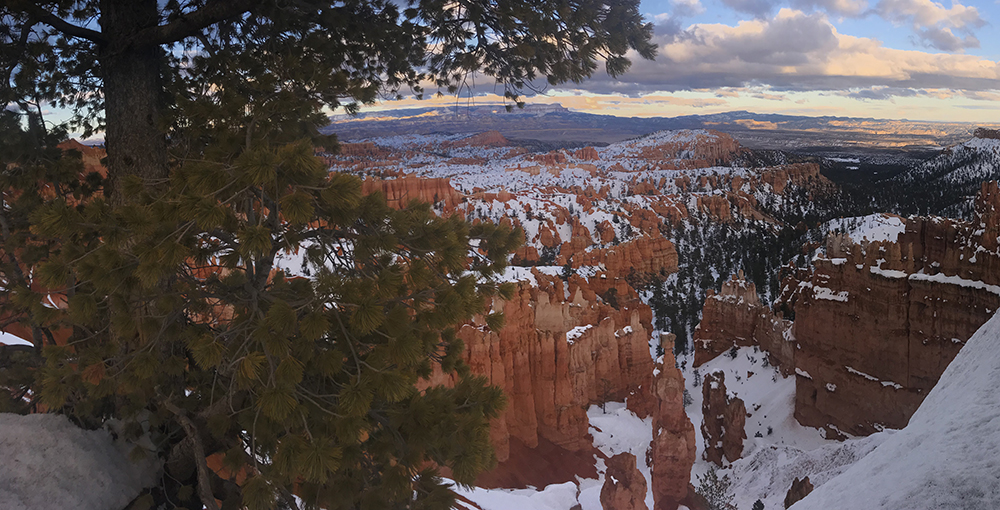
Winter activities include snowshoeing and cross-country skiing. There are ski trails on the rim of the park, but skis are not allowed below the rim. Snowshoes are allowed below however, so this makes a good case for throwing a pair into the roof rack on your next winter trip to Utah’s southern region.
Don’t forget to check out the visiting Bryce Canyon page to determine which season will work for you.
Night Skies at Bryce
Bryce Canyon National Park is home a unique night-sky viewing program. The park enjoys an isolated location, miles from any significant population centers. This, in addition to its elevation and relatively low air pollution levels help to make it one of the best areas from which to view the night sky.
The park offers astronomy lectures that are often followed by star-gazing parties in the parking lot of the visitor center. Weather permitting, the park’s Dark Rangers deploy an array of powerful telescopes that provide unbelievable views of our small solar system.
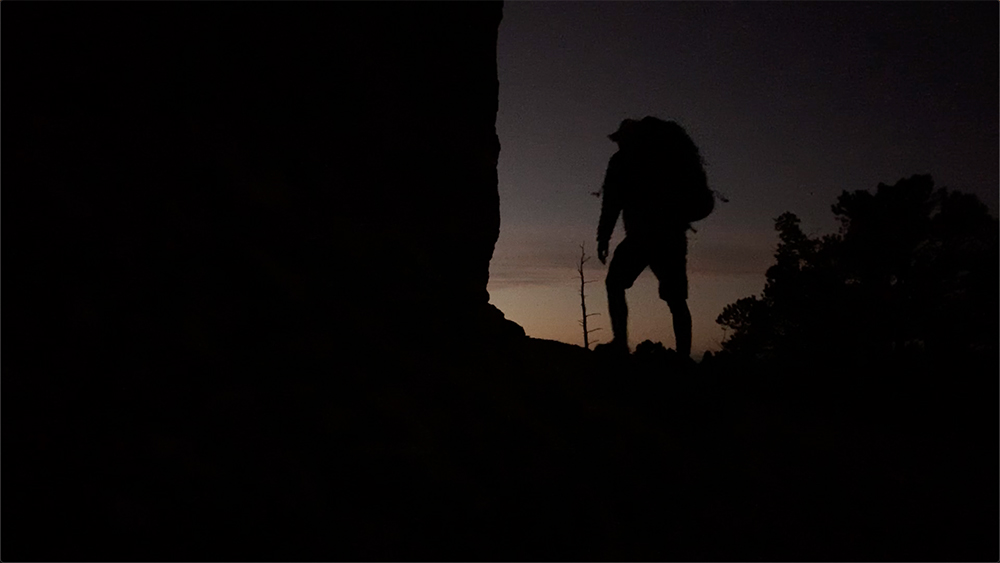
These programs are offered a few times weekly in the summer. Check with the visitor center for updated programs. Most agree that the darker the sky, the better. So you may wish to visit during a moonless night to get the most from a night view. That said, moonlit hikes are absolutely awesome in the hoodoos, so you really can’t go wrong with a night spent out in Bryce.
There is also an astronomy festival held in conjunction with the Salt Lake Astronomical Society, so if that’s your thing, this may be for you.
Park Junkie Verdict
Bryce Canyon is one of our more unique parks in a club of magnificently unique landscapes. Nothing else compares in so many ways. It is without a doubt as marvelous and exquisite as Stephen Mather declared.
I have been exploring Bryce Canyon for more than two decades. My first Under the Rim hike in the year 2000 left me with a excellent impression of the park and its bizarre features. I have continued to return year after year, for obvious reasons. The park’s backcountry is as isolated as you’ll find in southern Utah, and the scenery is always soothing.
It is a classic national park and offers satisfying options for those of any stripe. It is difficult to imagine anyone going to Bryce and not coming away with a sense of awe and wonderment. I’m headed back this year again, for sure!
See you there…
Guide to Bryce Canyon
Relevant Links
NPS – Bryce Canyon National Park
National Park Guides

All content found on Park Junkie is meant solely for entertainment purposes and is the copyrighted property of Park Junkie Productions. Unauthorized reproduction is prohibited without the express written consent of Park Junkie Productions.
YOU CAN DIE. Activities pursued within National Park boundaries hold inherent dangers. You are solely responsible for your safety in the outdoors. Park Junkie accepts no responsibility for actions that result in inconveniences, injury or death.
This site is not affiliated with the National Park Service, or any particular park.
